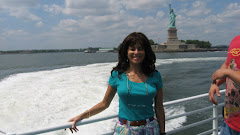Seville
Today (4-1-14), I made my second visit to the Andalusian region of Spain. Known for the cliché symbols of matadors, flamenco dance & music, gypsies, bulls, horses, strolling guitarists, beaches, and tapas bars, the region was ruled by the Moors for 500 years and it is reflected in all aspects of the culture including architecture, art, music, cuisine, and more.
Our ship docked in the port of Cadiz, the oldest and most continuously inhabited city in Western Europe and the wealthiest trading port there during the 18th century. I will visit this city during my next visit.
I decided to take a day trip to Seville, the capital of Andalucía and Spain’s 4th largest city, a 1.5 hour drive north of Cadiz. Upon arrival, I was delighted to see the famous white-washed houses with wrought-iron balconies, brightly lined with bougainvillea: ornate majestic palaces, and its mixture of Renaissance and Moorish architecture.
We began our 3-hour walking tour with a visit to the impressive 11th century Alcazar (Palace) with its maze of rooms, exquisitely decorated patios, and exotic gardens (that even house wandering peacocks). It continues to serve as the Seville residence of the Spanish royal family.
Although say Seville’s Alcazar and gardens reminded me of Istanbul's Topkapi Palace and Granada’s Alhambra, I appreciate this one most--Perhaps because it felt slightly less pretentious amidst all its opulence.
Next was the impressive Plaza D’Espagne, (which today mainly consists of Government buildings) an impressive august structure designed to serve as the centerpiece of the 1929 Ibero-American exhibition This event showcased magnificent stately pavilions from all the Spanish colonies including Guatemala, Mexico, Peru, Cuba (and even the US) (where several famous sci-fi films were shot) the backdrop is the verdant, beautifully landscaped Parque Maria Luisa which emits a blend of fragrances from wisterias, orange trees, giant fichus trees, magnolias and more. What impressed me the most were the Plaza's tiled 'Alcoves of the Provinces' where there are many tiled alcoves, each representing a different province of Spain.
Of note, the Plaza de España has been used as a filming location, including scenes for the 1962 film Lawrence of Arabia. The building was used as a location in the Star Wars movie series — Star Wars Episode I: The Phantom Menace (1999) and Star Wars Episode II: Attack of the Clones (2002) — in which it featured in exterior shots of the City of Themed on the Planet Naboo. It also featured in the 2012 film The Dictator.
A visit to the awe-inspiring 15th century Gothic Cathedral (the world’s 3rd largest after St Peters in Rome and St Paul’s in London) followed. The Giralda (bell tower) symbolizes the city and dominates its skyline.
Our walk through the Santa Cruz Barrio (former Jewish Quarter) delighted me with its narrow cobblestone streets, whitewashed houses, flower covered balconies, and hidden squares. I really smelled the scent of orange trees as we wandered through the city and its parks.
The residents were friendly and accommodating to our group.
























































.jpg)
.jpg)



